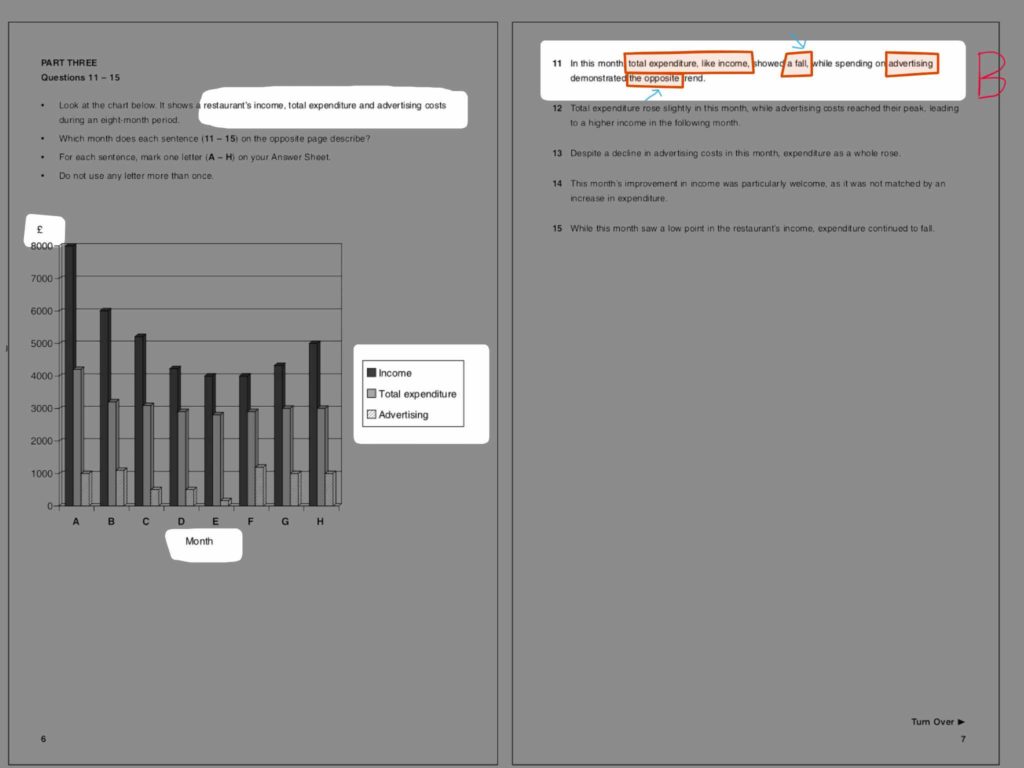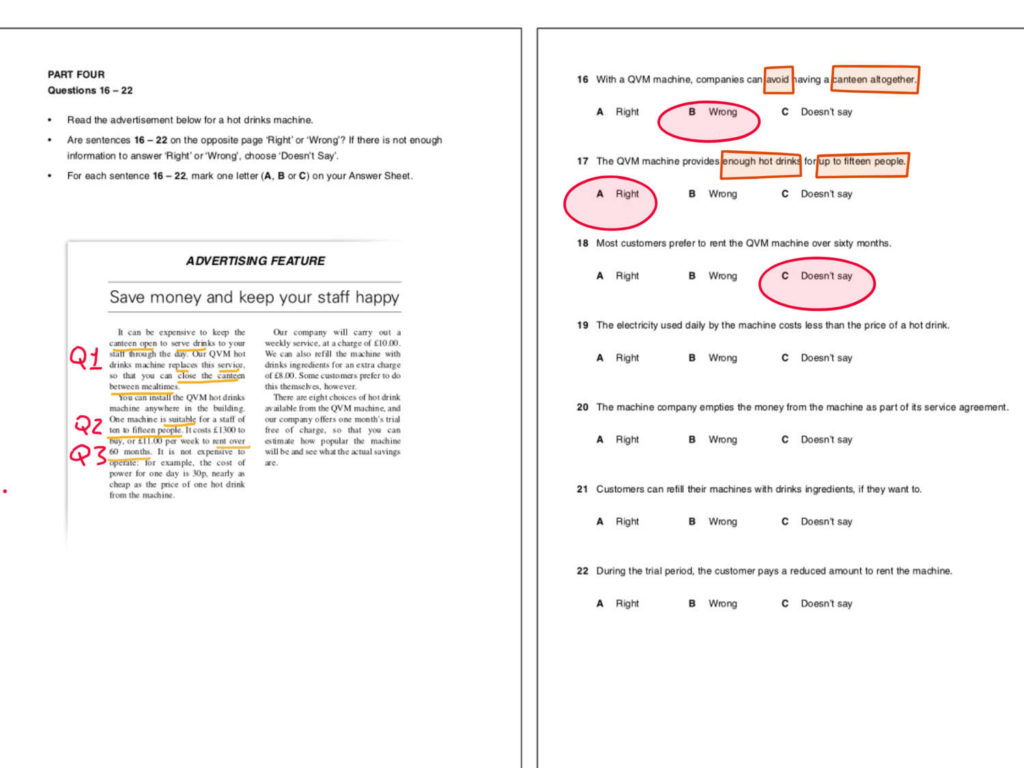B1 Business Preliminary (BEC Preliminary)
Reading Part Three – 5 points
The Task
You have eight graphs or charts and five sentences describing a graph or chart. You have to match the five sentences to the correct graph or chart. You will receive one point for each correct answer.
You can download a sample paper of Reading Part Three here and the answers here.
Procedure
This looks similar to part 2, with the same structure of 5 sentences and 8 options. However, because you have a graph or chart, it is useful to understand the context before you read the sentences. Look at the general description of the graphs in the question. This is usually the first line.

- Then read the words on the horizontal and vertical side of the graph. It is not necessary to look at the details at this stage. You want to be able to understand what ALL the graph is showing.
- If there is a key make sure you understand it. I have regularly had students who made mistakes because they misunderstood the key, not the English! In Part 3 you can lose points if you choose the wrong part of the graph.
Next, read the sentences. They are long sentences with two parts, and they describe the change or movement of the graph. You need to find information on the graph or chart where two parts match the sentence. One is not enough.
Highlight the keywords of each part of the sentence and consider if the change is going up or down- sometimes there is no change. It can be useful to mark the sentence with an up or down arrow.
Look again at sentence 11 (this is the first one) look for a graph which matches the complete sentence. Then do the same with the other sentences. In the example below, both total expenditure and income go down and advertising goes up, so the answer is B.
B1 Business Preliminary (BEC Preliminary) Reading Part Four – 7 points
The Task
There is a text and then seven questions. You will receive one point for each correct answer.
Each question is a sentence, and you have to decide if the sentence is:
A Right B Wrong C Doesn’t say
You can download a sample paper of Reading Part Four here and the answers here.
Guide to the task
This part can often confuse students. There is a big difference between Wrong and Doesn’t say, but this is not always clear for students to understand.
Wrong means the information in the sentence is incorrect, not true according to the text.
Doesn’t say means the information is not in the text, there is nothing in the text which corresponds with the meaning of the sentence. The sentence is perhaps true, but the text does not say that it is true.
For example,
The question sentence says:
The headquarters is the largest building in the city where it is located.
The text says:
The main office is, of course, located in the biggest of all the company offices.
The answer here is C Doesn’t say.
This is because the text does not mention a city and only talks about the size of the building.
Procedure
Read the questions first. Highlight the keywords, especially the words that can change the meaning of the sentence. These are often adjectives/adverbs like reduced, increased or mainly, normally, but could also be verbs or time phrases.

Find the part of the text which is connected with the question sentence. The questions are in the same order as the answers in the text. The answer to question 1 is at the beginning of the text (usually in the first or second paragraph), the answer to question 2 is after the answer to question 1 (usually in the next paragraph) etc
Decide if the information in the sentence is exactly the same as the text, wrong according to the text, or not included in the text.
Repeat the procedure with all the questions.
B1 Business Preliminary (BEC Preliminary)
Part Five – 6 points.
The Task
There is a long text and six questions. You have to find the answer to the question or the correct ending to the sentence. You choose from 3 options, A B or C. You will receive one point for each correct answer.
Guide to the Task
This is a standard “old-fashioned” reading comprehension task. The normal way is to read the text and then choose the correct answer! But do NOT do it like this.
It is not necessary or useful to read the text first. Your objective is to answer questions and you have a time limit to respect, so focus on the questions FIRST.
You can download a sample paper of Reading Part Five here and the answers here.
Procedure.
Read the context and the question sentences first. The context sentence is given as part of the task instructions, this is all you really need at this stage.
Read the question sentences only. Don’t read the A B C options at the moment (remember, two of them are wrong!)

- Highlight the keywords. These are words which explain the topic of the sentence and will help you find the answer in the text. They are also the words which help you decide on the answer. This is easy and quick to do.
For example, if the sentence says,
The writer says that a good sales strategy is mainly about
Then the keywords are good sales strategy, mainly.
It can also be useful to change the sentence into a question. Sometimes the exam will do this for you.
With the sentence above…
What is a good sales strategy about?
In the main text quickly look for vocabulary related to your keywords. Then read the whole sentence or sentences which contain the vocabulary and mark any keywords.
Now read the A B C options and choose the one that is closest to the information in the text. It doesn’t always have to be exactly the same.
Repeat this process with the next questions. The good news here is that the questions are in the same order as the answers in the text. The answer to question 1 is at the beginning of the text (usually in the first or second paragraph), the answer to question 2 is after the answer to question 1 (usually in the next paragraph). This can help you in two ways, it makes looking for the answers easier because you can follow the order but also if you have found the paragraph with the answer for questions 4 for example but you can’t decide if A or B is correct, then you can confidently go on to question 5 and come back to 4 later.